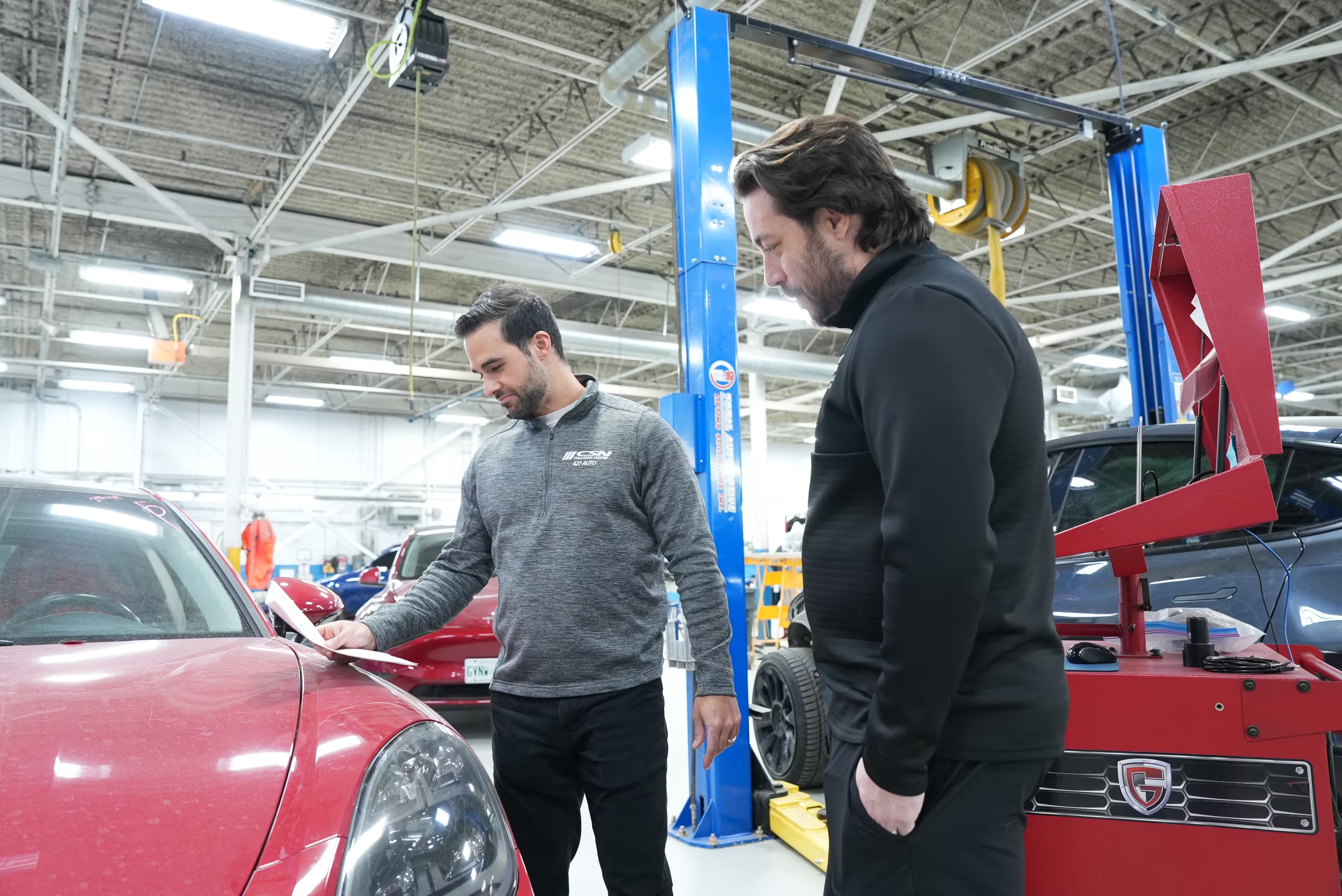
If you've ever wondered what happens behind the scenes at a collision centre, this is for you.
Most people see only the result: a car that looks as good as new. Here's a glimpse at a typical day at CSN 427's flagship facility, told from the perspective of the people who make the magic happen.
Morning huddle
At 7 a.m., the smell of fresh coffee mingles with the sound of impact wrenches. The foreman gathers everyone for a quick huddle. Who's working on what? Are there any challenging tasks that require extra assistance? On a recent Tuesday, I overheard a discussion about matching a pearlescent paint on a vintage sports car. The painter asked to see the car under natural light first—something you don't read about in a manual but learn after years in the business.
Diagnostics and disassembly
Once the bay doors open, it's straight into diagnostics. Modern vehicles often conceal sensors and cameras behind bumpers and body panels; we utilize digital scan tools to identify issues that may be invisible to the naked eye. During disassembly, surprises often emerge—a bent bracket here, a cracked plastic panel there. We document everything with photos so customers and insurance adjusters can follow along. Transparency matters; no one likes unexpected phone calls about additional damage.
Collaboration over silos
CSN 427 doesn't operate in silos. Body technicians, painters, parts staff and estimators work side by side. When a car moves from body work to paint, the body tech and painter inspect it together. They discuss any special considerations—such as how to blend a new panel seamlessly into an existing finish. This conversation isn't scripted; it's two craftspeople sharing knowledge to get the best outcome. CSN 427's process blogs explain the repair steps (see our blog on what's involved in the automotive collision repair process), but the real magic is in these human interactions.
Lunch and laughter
Lunch breaks aren't just about eating; they're about taking a moment to decompress. The owner often stops by the break room to ask how everyone's morning is going. Conversations drift from rare cars to hockey scores. This easy camaraderie explains why many technicians have been here for decades—it feels like family.
Afternoon precision
After lunch, it's time for reassembly and quality control. We torque every bolt to specification and recalibrate safety systems, such as front bumper sensors. Once reassembled, vehicles go through meticulous detailing. Only after the lead tech and a quality‑control supervisor sign off does the car move to the delivery area.
Continuous improvement
After hours, the bays are quieter, but learning continues. We debrief on complex jobs and share lessons learned. An apprentice might shadow a master tech who explains how he achieved a perfect panel gap. Training doesn't only happen in classrooms; it happens every day on the shop floor.
It all starts with an estimate and insurance approval
Once the green light is given, we disassemble the vehicle to uncover hidden damage. This process can trigger a re‑inspection and additional parts orders. Modern cars have sensors tucked behind bumpers and trim; we take care to disconnect electronics and label fasteners so nothing is lost. Transparency is key: if we find a cracked support behind the fascia, we photograph it and call the owner before proceeding.
Structural repairs and bodywork
With the vehicle torn down, structural repairs begin. We use electronic measuring systems to compare frame dimensions against factory specs and ensure wheel alignment. Body panels are repaired or replaced, and welds are performed to OEM standards. This meticulous work restores the car's ability to absorb impact properly and ensures your vehicle's safety features function properly.
Paint prep and colour matching
Painting is both a science and an art. Panels are prepared, primed and sealed for optimal adhesion. We use colour-matching tools to blend new paint seamlessly into existing finishes. For complex colours, our painter sprays multiple test cards and views them under various lighting conditions before painting the vehicle.
Reassembly, detailing and quality control
After repairs and painting, vehicles move to the reassembly stage, where mouldings and trim are reattached and electronics are recalibrated. A final detailing and quality control phase includes interior cleaning, polishing, and a road test to ensure everything functions as intended. We treat every car like our own; no vehicle leaves until it passes our internal audit.
The satisfaction of a job well done
Watching a once‑damaged vehicle leave the shop in pristine condition is deeply satisfying. At CSN 427, we call customers a few days after delivery to ensure they're happy and answer any lingering questions.
Want to join us?
Apply Here: https://www.427autocollision.com/careers







































